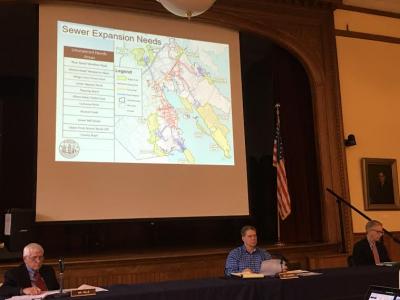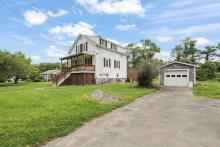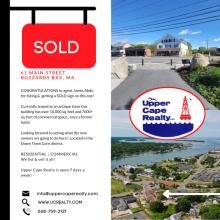Report recommends extending sewer in Marion
MARION — Marion residents received their first glimpse at a wastewater management plan that recommends extending the sewer system to 11 areas of town.
The Comprehensive Wastewater Management Plan written by Weston & Sampson Engineers was created to develop a long-term plan for the town’s wastewater needs and was presented to the public at the Monday, May 23 meeting of the Select Board.
The Planting Island area was ranked the highest priority for sewer extension. Other high priority areas were Lower Sippican Neck, Upper Front Street, Aucoot Creek and River Road/Wareham Street.
Medium priority areas were: Lower Mill Street, County Road and Wings Cove/Piney Point.
Lower priority among the recommendations were Delano Road/Weweantic River area, Allens Point/Harbor East and Converse Point.
A “main driver” of these recommendations was the environmental impact that septic systems have on waterways, said Gina Cortese, engineer at Weston & Sampson Engineers.
Extending sewer to these areas would reduce the amount of nitrogen that seeps into the ground from septic systems and negatively impacts water quality, officials said.
This is particularly significant in coastal communities such as Marion, Cortese said, and can be a particular concern with older septic systems.
More than 90 percent of Marion is not connected to sewer, said Kent Nichols, an engineer at Weston & Sampson Engineers.
No information was available on the cost of sewer to individual neighborhoods or individuals. Those costs will be presented at future meetings, Town Manager Jay McGrail said.
The plan also calls for major upgrades to the wastewater treatment plant to handle contaminants such as phosphorus and copper and to otherwise make process improvements, McGrail said.
Potential costs for these upgrades ranged from $11 million at the lowest end to $76 million for the most expensive proposal, which is to regionalize Marion’s wastewater system with Wareham. Through this proposal, wastewater from Marion would be treated at the Wareham wastewater facility, which would need to expand its capacity for this to happen.
Buzzards Bay Coalition has estimated the cost of regionalization at $55.5 million, said Korinn Peterson, senior attorney and vice president of Clean Water Advocacy at the coalition. This figure is significantly lower than the plan’s price tag.
Peterson also said that government funding may be available to help offset the cost of regionalization.
The town will work with the coalition to ensure the most updated figures are presented, McGrail said.
These costs were determined based on available factors, Nichols said. “We’re all ears to hear if there’s another way to mitigate these costs,” he said.
Work is needed at nearly all the town’s pump stations, which are storage collection facilities that lift and distribute wastewater when it cannot naturally be carried by gravity, the report states.
The town will also seek an expansion of their state permit to allow additional capacity at the plant, McGrail said.
The plant is now permitted to handle nearly 600,000 gallons per day. With added sewer, this number would need to be increased by about 100,000 gallons per day, he said.
Information in this plan is strictly a recommendation, McGrail said, and would need to be accepted by the Select Board and Massachusetts Department of Environmental Protection.
Any projects undertaken as a result would need approval by Town Meeting voters.
“This is truly a planning document,” he said, which can serve as a “road map” to the town’s eventual decisions. Some recommendations in the plan will likely be implemented and others won’t, he said.
Read the whole report here.












